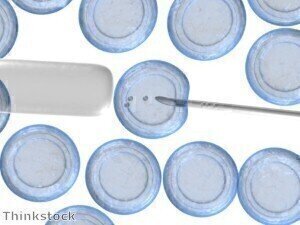News & Views
Epigenetic changes that transpire in adult stem cells to produce different types of human body tissues have been identified, according to research in the American Journal of Pathology.
Oct 03 2012
The study was developed by Bellvitge Biomedical Research Institute (IDIBELL) researchers and led by Manel Esteller, professor and director of the Cancer Epigenetics and Biology Program at IDIBELL.
Regardless of the way cells look and function, the genome of every single cell in the human body is identical.
This makes the ability to fully explain the genome activity of tissues and organs, and their disorders in complicated diseases (such as cancer), extremely difficult.
There must be something more to the story – and this could be partly down to epigenetics, which is the inheritance of DNA activity that doesn't rely on the strict sequence of it. It refers to chemical alterations in genetic material and their regulatory proteins.
The addition of a methyl group to DNA is the most recognised epigenetic mark. So, the epigenome is attaining all the epigenetic marks of a living being.
Adult stem cells have a huge probability of regenerating damaged organs and their employment also evades ethical difficulties involving embryonic stem cells, in addition to technical issues happening from induced stem cells.
In this study, scientists have secluded stem cells from body fat and changed them into bone and muscle cells.
Then researchers examined how much the cells created in the laboratory resembled those present in one person. They were also tested to see how biologically secure they are, so they could safely be implanted into patients.
The study showed that the epigenome of the cells acquired in culture strongly looks like that of skeletal muscle cells, and they are spontaneously present in nature, however they are not entirely identical.
An important point of the research is that muscle and bone cells fashioned in the laboratory don't have the tumour epigenome derived from these tumour tissues, so they are safe from a biological viewpoint.
Professor Esteller explains that the research "demonstrates the usefulness of epigenetics in determining the degree of maturity and biosecurity of differentiated tissues used in regenerative medicine against different diseases."
Posted by Fiona Griffiths
Digital Edition
Lab Asia 31.2 April 2024
April 2024
In This Edition Chromatography Articles - Approaches to troubleshooting an SPE method for the analysis of oligonucleotides (pt i) - High-precision liquid flow processes demand full fluidic c...
View all digital editions
Events
May 14 2024 Oklahoma City, OK, USA
May 15 2024 Birmingham, UK
May 21 2024 Lagos, Nigeria
May 22 2024 Basel, Switzerland
Scientific Laboratory Show & Conference 2024
May 22 2024 Nottingham, UK






.jpg)











